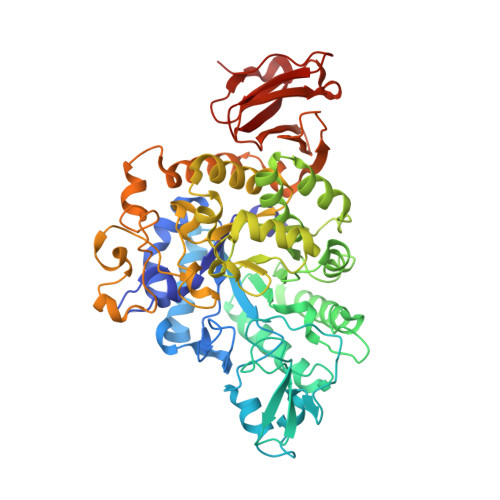Structural Characteristics and Function of a New Kind of Thermostable Trehalose Synthase from Thermobaculum terrenum.
Wang, J., Ren, X., Wang, R., Su, J., Wang, F.(2017) J Agric Food Chem 65: 7726-7735
- PubMed: 28809106
- DOI: https://doi.org/10.1021/acs.jafc.7b02732
- Primary Citation of Related Structures:
5X7U - PubMed Abstract:
Trehalose has important applications in the food industry and pharmaceutical manufacturing. The thermostable enzyme trehalose synthase from Thermobaculum terrenum (TtTS) catalyzes the reversible interconversion of maltose and trehalose. Here, we investigated the structural characteristics of TtTS in complex with the inhibitor TriS. TtTS exhibits the typical three domain glycoside hydrolase family 13 structure. The catalytic cleft consists of Asp202-Glu244-Asp310 and various conserved substrate-binding residues. However, among trehalose synthases, TtTS demonstrates obvious thermal stability. TtTS has more polar (charged) amino acids distributed on its protein structure surface and more aromatic amino acids buried within than other mesophilic trehalose synthases. Furthermore, TtTS structural analysis revealed four potential metal ion-binding sites rather than the two in a homologous structure. These factors may render TtTS relatively more thermostable among mesophilic trehalose synthases. The detailed thermophilic enzyme structure provided herein may provide guidance for further protein engineering in the design of stabilized enzymes.
Organizational Affiliation:
Faculty of Light Industry, Province Key Laboratory of Microbial Engineering, Qilu University of Technology , Jinan 250353, P.R. China.




















